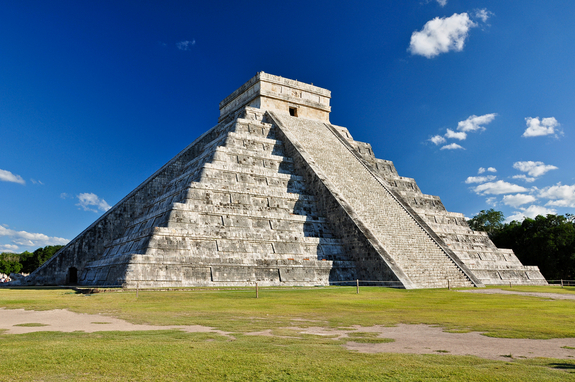Curriculum Planning: World Study
Curriculum Planning

Curriculum Planning: which non-European society might we offer at school?
‘A non-European society that provides contrasts with British history - one study chosen from:
- early Islamic civilization, including a study of Baghdad c. AD 900;
- Mayan civilization c. AD 900;
- Benin (West Africa) c. AD 900-1300.'
That's quite clear then - there's a choice between early Islam, Central America or Africa. All of which if you are like me you know very little about! How do I teach them when there are few if any relevant resources on these topics? (See links to our resources and schemes of work at the end of this page.)
The ‘Purpose of Study' exhorts us to help pupils gain a ‘coherent knowledge and understanding of Britain's past and that of the wider world.' Obviously the study of a non-European society plays a key part in this. But where do we start? Isn't it a shame that Africa mostly appears in the national curriculum as a story of Britain's empire and slavery? Or that Islam appears as a 20th-century terrorism problem? Or America features as a War of Independence from Britain? How does that add to a coherent knowledge of the history of the wider world? So which option we choose will influence the balance of our curriculum and our pupils' world view.
The Maya, for instance, are regarded as Mesoamerica's greatest society. They were probably, although scientists still argue about this, responsible for their own downfall, by overpopulation, chopping down too many trees, altering the climate. Is this relevant to today or what? And of course Key Stage 2 Geography's focus is on the Americas - Brazil and the rain forest, over-exploitation, climate change provide a clear link to the Maya civilisation of earlier times.
Benin of course is famous for its bronzes that can be found in many British museums. When Europeans first visited Benin they thought Africans couldn't possibly have made such complex artworks. There's a way in to contemporary issues too. And although Benin didn't really exist in 900AD, it is about the time of William the Conqueror that the first real dynasty appears. This gives us another clear link to explore. Benin becomes rich trading with Europeans - especially slaves. And of course you can carry on your study of Benin until 1897 when the British conquer Benin and turn it into a colony.
Baghdad was perhaps the greatest city in the world in 900AD, having a population of over 1 million. It was the capital of the Arab world, famed for its medicine, trade. and learning (The House of Wisdom collected together all the writings of Greeks, Romans and Arabs, and scholars from all around the world flocked there). And this continued until the city was captured by the Mongols in 1258. Again, if you want to provide a different vision of Muslims and the Arab World in your community then this is a great option to choose.
So, as you can see, the choice is quite a difficult one, and will largely depend on the interests of your teachers, the make-up of your school community and how you choose to link this topic with the rest of your school curriculum. The Maya have clear links amongst others to Geography, Art, Numeracy and Science, as well as to Stone Age Britain. Baghdad similarly has links to Science, Numeracy, Geography, and Benin has links to Technology as well as Geography. Each brings its own unique contribution to a coherent understanding of the history of the wider world.

